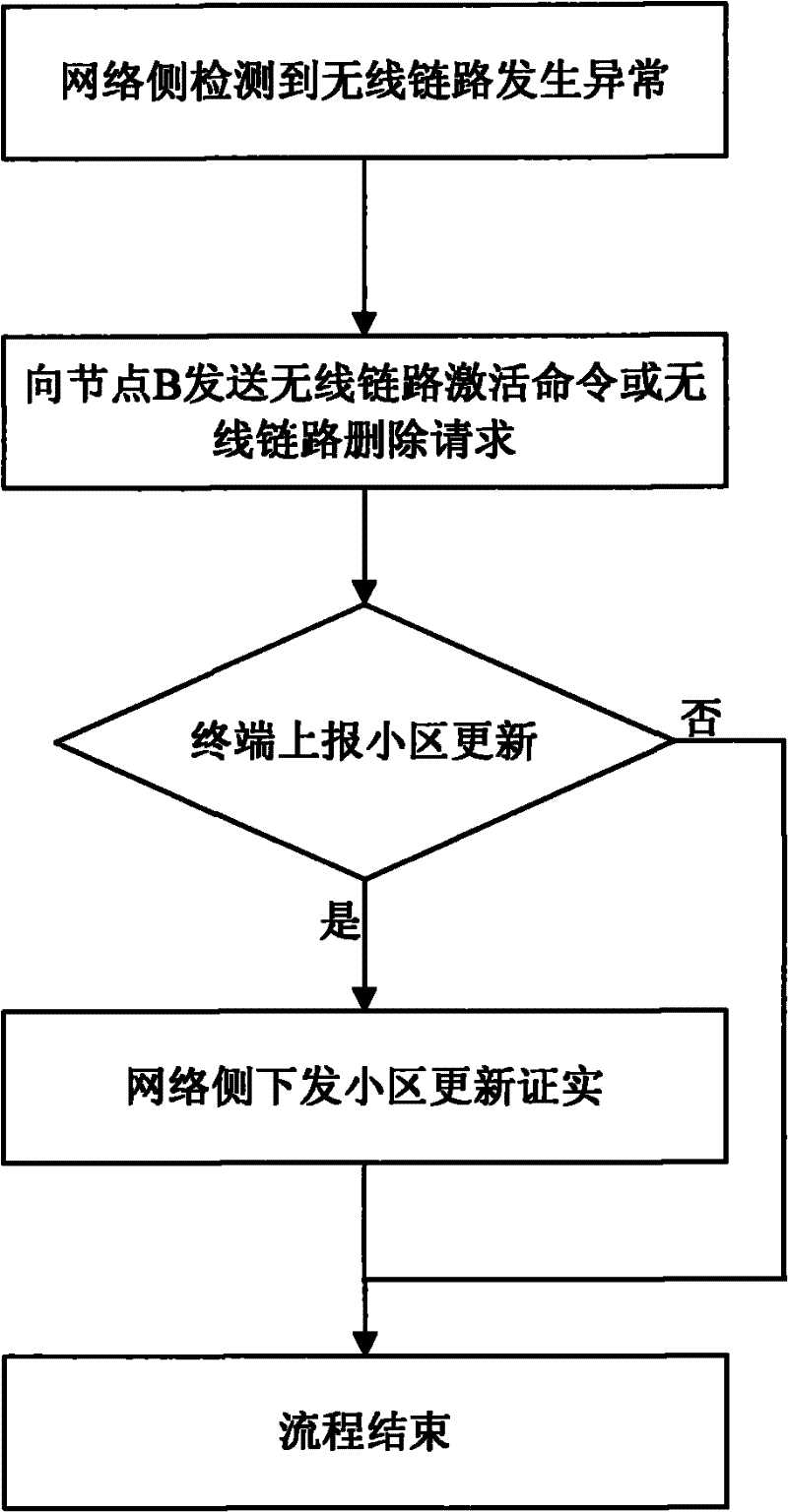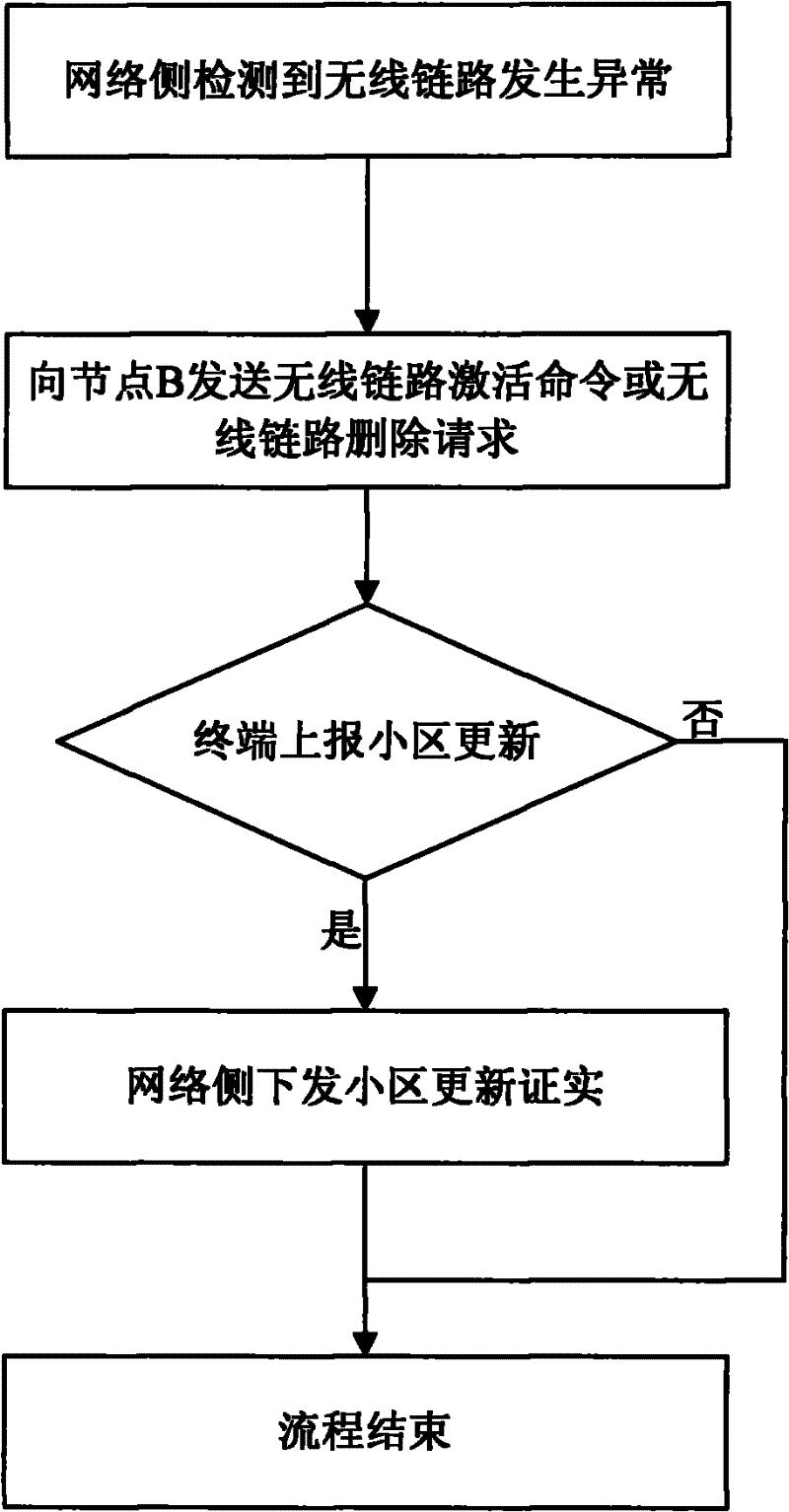A Network Side Rescue Method for Service Abnormality in the Third Generation Communication Network
A communication network and service exception technology, applied in the field of service exception rescue, can solve the problems of low burst quality of dedicated channels, no signal detected, no transmission module received, etc., to achieve the effect of improving the system call drop rate index
- Summary
- Abstract
- Description
- Claims
- Application Information
AI Technical Summary
Problems solved by technology
Method used
Image
Examples
specific Embodiment 1
[0029] When the downlink communication is normal, the Node B detects an abnormality in the uplink, and judges that the number of uplink out-of-synchronization meets the condition for reporting radio link failure, the Node B reports a radio link failure indication to the radio network controller.
[0030] After receiving the wireless link failure indication, the radio network controller sends a radio link activation command to the node B, and in the radio link activation command, the radio link identifier fills in the radio link corresponding to the reported radio link failure. The activation type is filled in as deactivation. The deactivation can be synchronous deactivation or asynchronous deactivation. If it is filled in as the synchronous deactivation, CFN needs to be specified; or the radio network controller sends a wireless link to Node B. A path deletion request, the radio link identifier in the radio link deletion request is filled with the radio link identifier correspo...
specific Embodiment 2
[0036] The network-side algorithm determines that the terminal needs to initiate a handover process based on the measurement report reported by the terminal, allocates physical resources on the new cell, notifies the terminal through a physical channel reconfiguration message, and sets a waiting timer to wait for the terminal to report a physical channel reconfiguration completion message. Since the network downlink interference is relatively serious at this time, the terminal cannot correctly identify the physical channel reconfiguration message delivered by the network side.
[0037] The waiting timer on the network side waits for the terminal to report the physical channel reconfiguration completion message to time out, and sends a radio link activation command or a radio link deletion request for the old and new radio links to Node B, and the radio link activation command or In the wireless link deletion request, the wireless link identifiers are filled in as the new and ol...
specific Embodiment 3
[0043] The RLC layer of the radio network controller meets the reset conditions, sends an RLC reset instruction to the terminal, does not receive a terminal reset response, and reaches the maximum number of times set by the system, and the radio network controller sends a radio link activation command for the current radio link to Node B or radio link deletion request. In the wireless link activation command or wireless link deletion request, the wireless link ID is filled in as the current wireless link ID, and the activation type in the activation command is filled in as deactivation. Synchronous deactivation and asynchronous deactivation can be used. If it is filled in as synchronous To deactivate, you need to specify the CFN and set the waiting timer.
[0044] The Node B receives the radio link activation command or the radio link deletion request, and instructs the Node B to stop downlink transmission power.
[0045] The terminal meets the radio link out-of-sync conditio...
PUM
 Login to View More
Login to View More Abstract
Description
Claims
Application Information
 Login to View More
Login to View More - R&D
- Intellectual Property
- Life Sciences
- Materials
- Tech Scout
- Unparalleled Data Quality
- Higher Quality Content
- 60% Fewer Hallucinations
Browse by: Latest US Patents, China's latest patents, Technical Efficacy Thesaurus, Application Domain, Technology Topic, Popular Technical Reports.
© 2025 PatSnap. All rights reserved.Legal|Privacy policy|Modern Slavery Act Transparency Statement|Sitemap|About US| Contact US: help@patsnap.com


